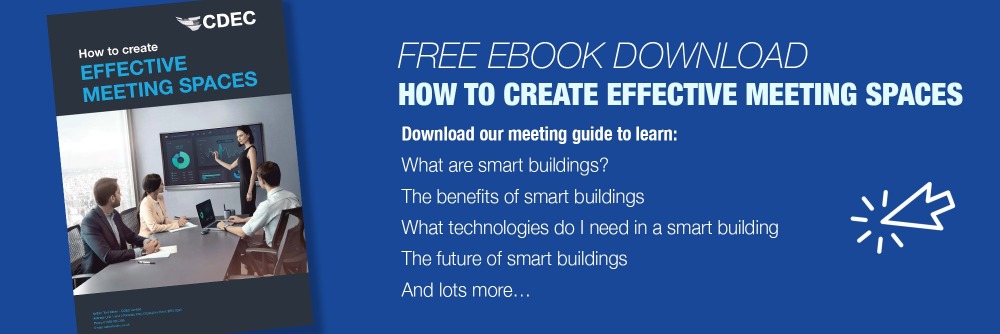It may seem like with a simple video conferencing application and a central display, a meeting room would be largely fit for purpose.
Employees will be able to make calls, conduct conferences with external stakeholders and gain some of the benefits that video brings to such calls.
However, the truth is that by thinking about how a meeting room is actually being used, investing in more purpose-built equipment and contracting the services of a specialist AV integrator (*** link to Meeting Room Post 3 ***), can create a space that both simplifies and enhances the users experience, helps accommodate the changing way we work (*** link to Meeting Room Post 1 ***), and the resulting benefits become much more significant.
By focusing on the user, you’re more likely to avoid the common mistakes (*** link to Meeting Room Post 2 ***) also.
For example, if users are able to book rooms, turn up when their meeting is due to start, log in to their video call with a single button press, and see and hear those on the far end clearly and accurately, the benefits are many.
One obvious positive is that users are able to utilise their time more efficiently – they no longer have to turn up to the meeting ten minutes early to ensure they’re ready to start on time, nor do they have to waste time at the beginning of the call making sure everyone can see and hear each other.
As the call goes on this efficiency continues as clear audio and video throughout the meeting will mean attendees don’t have to constantly repeat what they’re saying, or wait for screens that have temporarily frozen to come back to life.
All of this also helps with decision making – if everyone can clearly hear others’ ideas and opinions, a conclusion can be reached much more quickly.
This is of benefit when teams are communicating with each other, but it is even more important when it comes to external stakeholders such as clients.
Not only does a professional meeting room setup enhance the perception of your company, but it also becomes easier to build and maintain relationships if callers can see each other clearly, make eye contact and read body language.
The choice of display is clearly important here, as it needs to be of high enough quality to ensure the clarity of detail that is needed. It also needs to be positioned in a place where all participants in a room can be clearly seen. While it can be tempting to opt for a cheaper consumer-grade device, be aware that you will likely be compromising on quality as well as longevity, and these devices won’t be covered by any warranty so may prove much more expensive in the long run.
The best meeting rooms aren’t just about being able to see and hear each other, however.
In many industries, it’s also important to be able to share documents while on a call. Here a wireless content sharing solution can be of huge benefit. By opting for a system that enables participants to not only share but also annotate content, engagement in meetings is significantly enhanced as users can work together, sharing ideas and solving problems, and as changes can be made on the fly, decision making is streamlined.
The added benefit of a wireless system is that it is simple for the user, as well as being a more aesthetically pleasing option for boardrooms.
At this point, it becomes clear to see the ROI from investing in professional meeting room equipment. By helping to bring together teams, aiding decision-making, boosting relationships with clients and enabling more efficient and effective decision making, the business benefits are many, so long as you have the right equipment.
To find out more about the technology available to improve your meeting spaces, get in touch to let us know your requirements and download the How To Create Effective Meeting Spaces eBook below, for more information.

